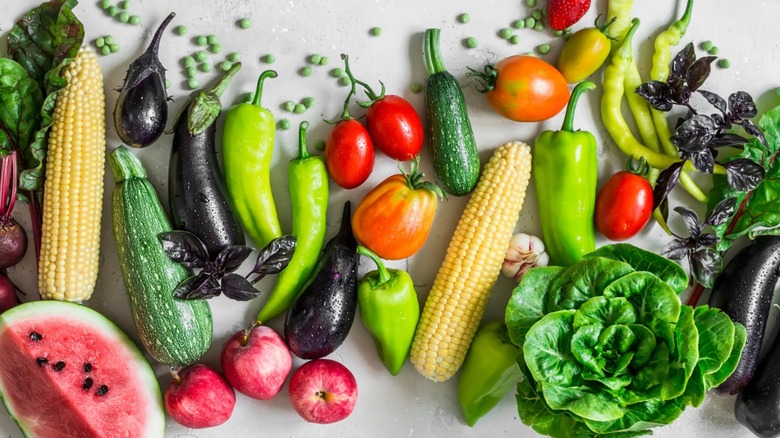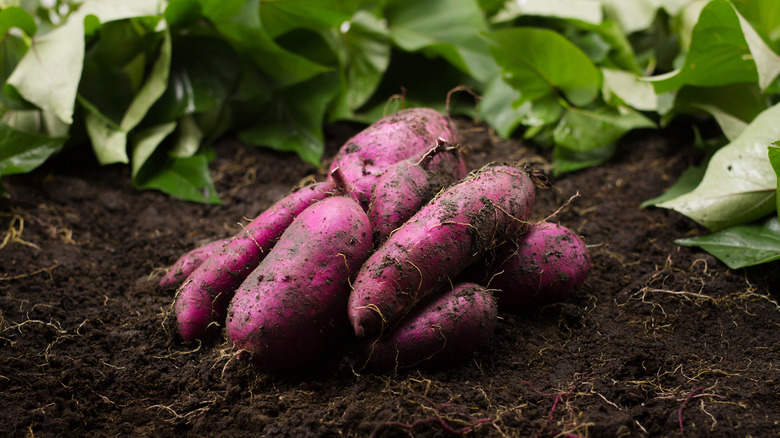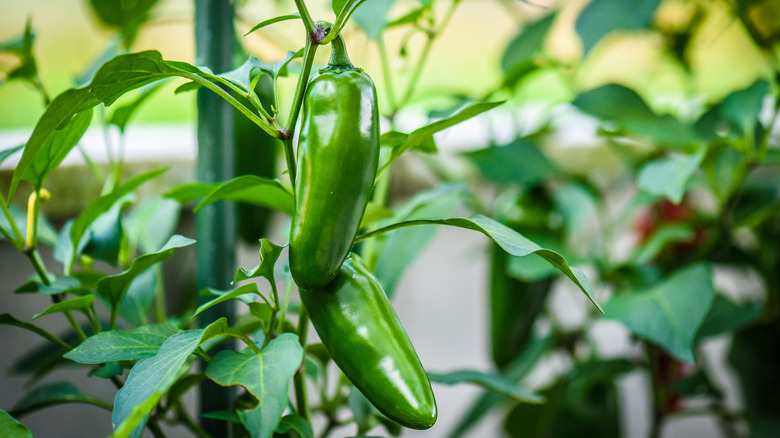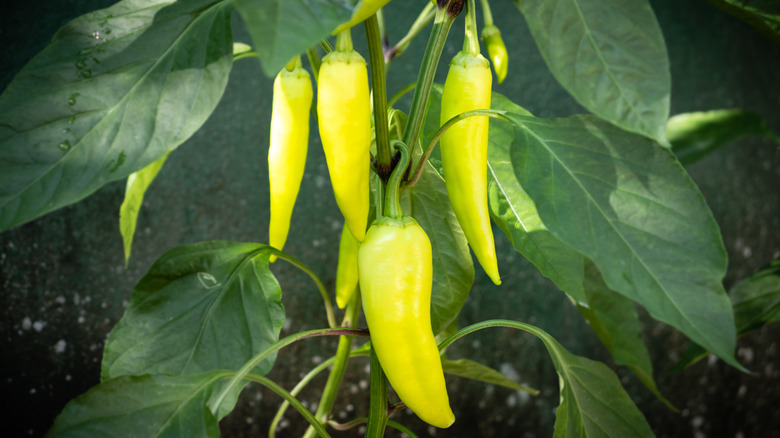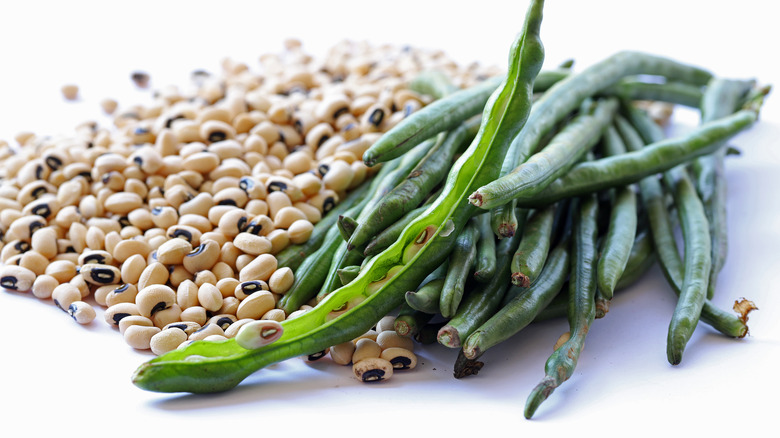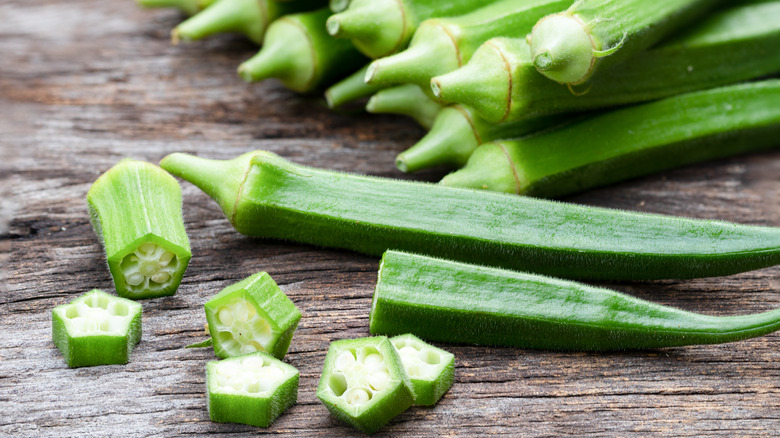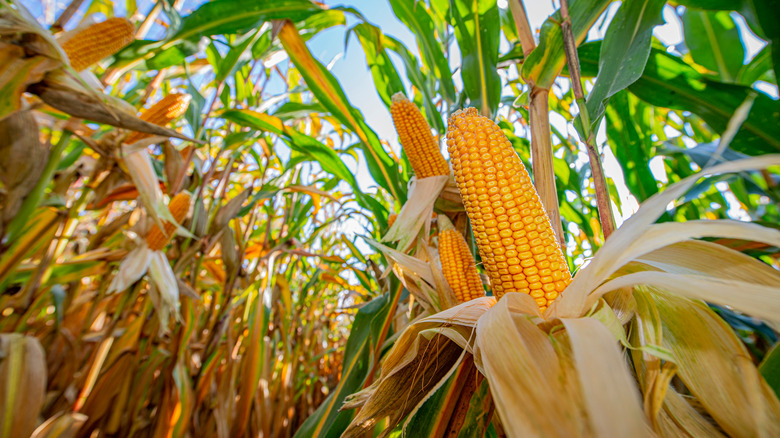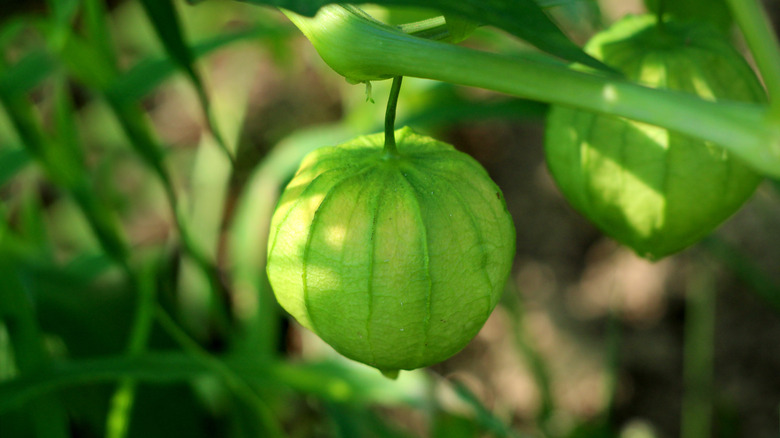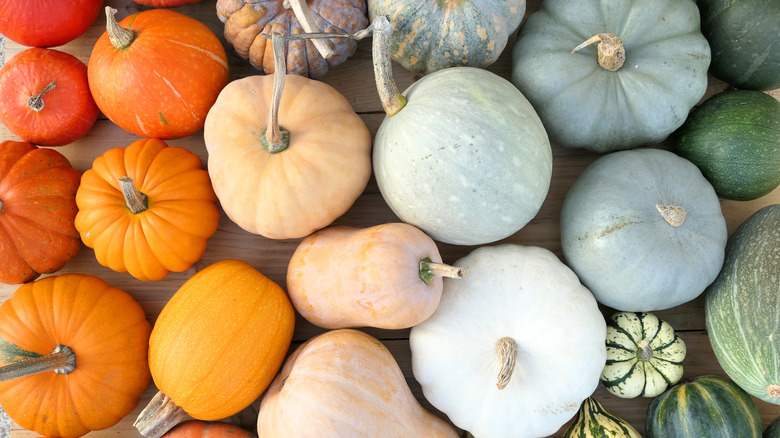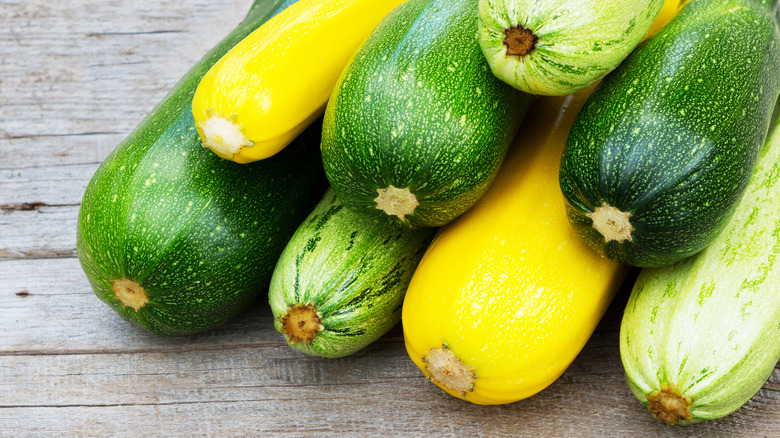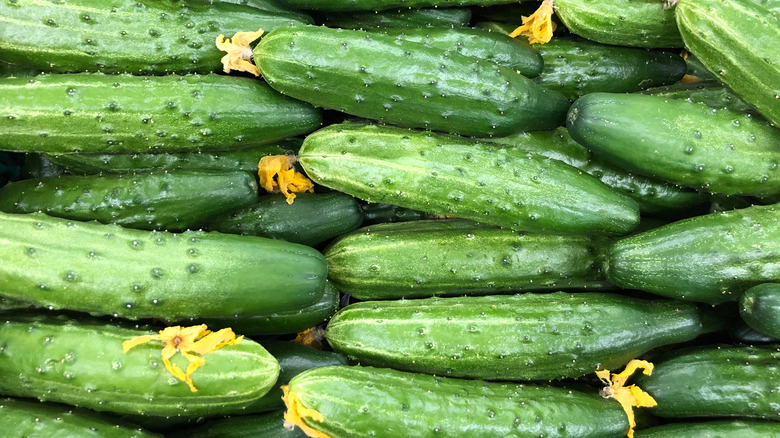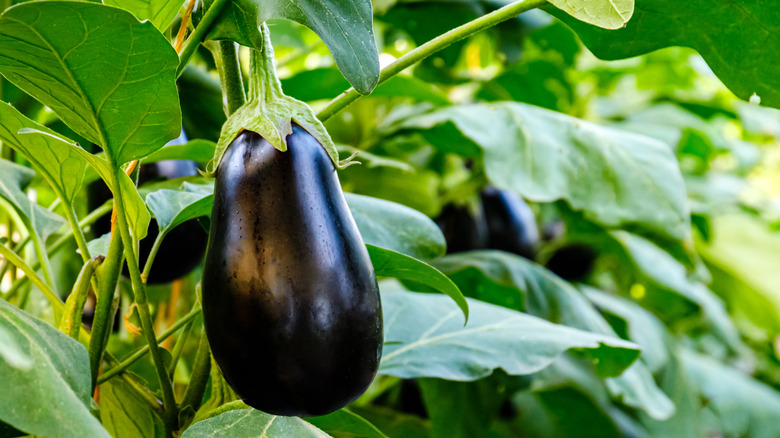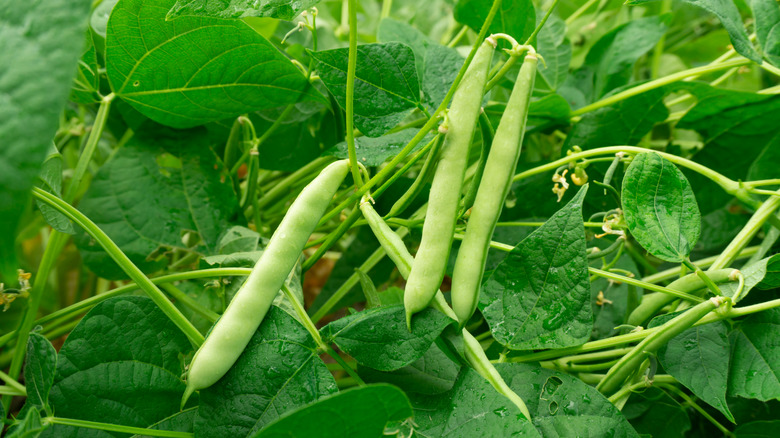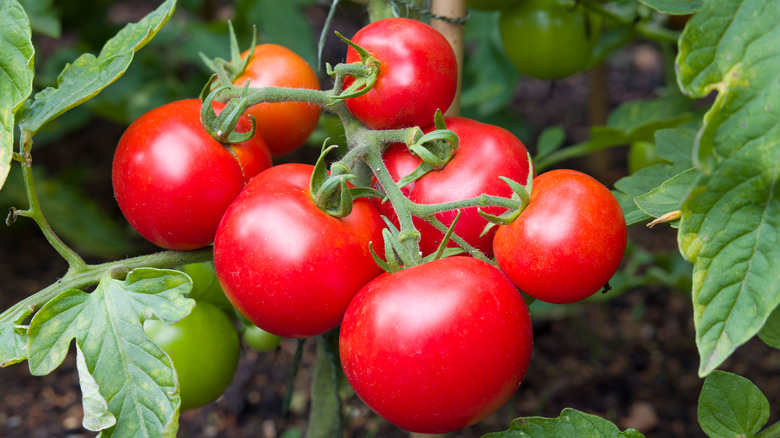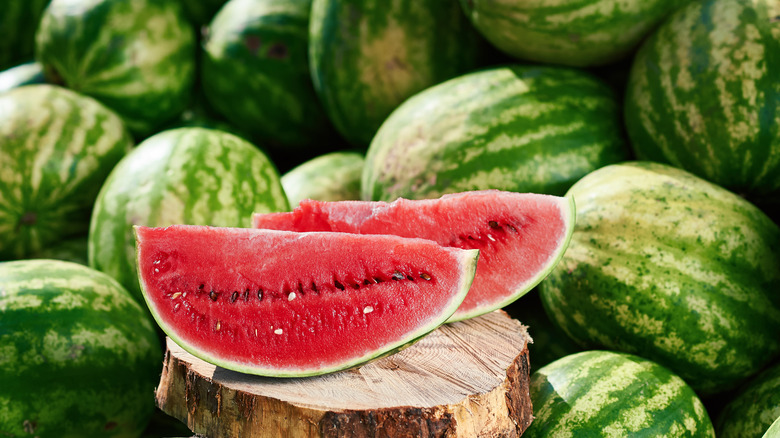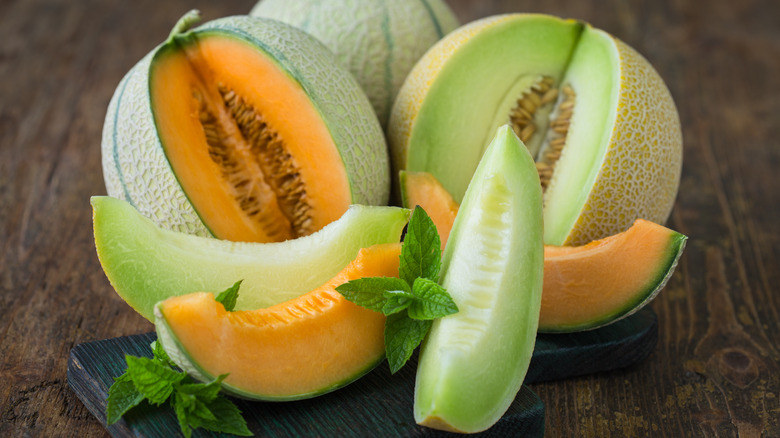15 Sun-Hungry Vegetable Plants That Can Handle The Summer Heat
It sure seems to be getting hotter and hotter, and with rising temperatures here to stay, you may be concerned about what to grow in your backyard garden. Sadly, some hobby gardener favorites are just not built to tolerate high heat. Hopefully, you'll get your cool-weather plants — like asparagus, beets, broccoli, and kale — into the ground early, in order to give them the best chance of thriving and producing a significant yield. But once the temperatures really start to soar, it will be time to focus on the sun-loving, warm-weather plants.
There are so many great vegetables to choose from in the latter group, so don't worry if you live in an area with particularly hot summer weather. Most of these plants literally worship the sun day in and day out. Provided they are sufficiently watered and planted in well-draining vegetable-specific soil, you're bound to have an incredible bounty come harvest time. Penn State Extension suggests mapping out your garden in advance as a way to ensure space needs are met throughout the season.
Just think of all the delicious dishes you'll be able to concoct in the kitchen once you've got sweet potatoes, beans, corn, okra, and hot peppers ripe and ready to go. And you won't be stuck cooking in a hot kitchen for long. Cucumbers, honeydew, cantaloupe, and watermelons are included here, too. Refreshing as well as hydrating, cucumbers and melons are delicious when sliced and eaten raw, and they also spruce up a boring glass of water!
1. Sweet potatoes
Not only do sweet potatoes (Ipomoea batatas) tolerate heat, they prefer it. In fact, according to Texas A&M Agrilife Extension, these root vegetables want temperatures to stay toasty at night as well. As a delicious vegetable and a flowering ground cover option, this is one versatile plant that is also very healthy to eat.
USDA Growing Zone: Annual in any zone for summer; winter hardy in zones 10 and up
Growing Conditions: Full sun
Soil Type: Well-draining; slightly acidic, sandy loam
2. Spicy jalapeños
Can eating something spicy cool you down? Wired says maybe, so why not try it with a hot pepper straight from the garden? Jalapeños (Capsicum annum) are relatively easy to grow provided it's warm, and they're sufficiently watered. You may see a slow down in pepper production if temperatures hover consistently above 90 degrees Fahrenheit, but otherwise, they'll thrive.
USDA Growing Zone: Annual in any zone for summer; winter hardy in zones 9 and up
Growing Conditions: Full sun; water the root system, keep leaves and peppers dry
Soil Type: High organic matter content, loamy, well-draining
3. Sweet banana peppers
Perhaps these should be called the yin to the jalapeños' yang. Sweet banana peppers (Capsicum annuum) are so named for their physical resemblance to bananas. They thrive in the same conditions as their spicy siblings yet taste nothing like them. Sometimes called yellow wax peppers, their flavor is subtle and their spice level is mild.
USDA Growing Zone: Annual in any zone for summer; winter hardy in zones 9 and up
Growing Conditions: Full sun; water the root system, keep leaves and peppers dry
Soil Type: High organic matter content, loamy, well-draining
4. Southern peas
Vigna unguiculata goes by many names. Per the University of Arkansas Division of Agriculture, Southern peas, cowpeas, and black-eyed peas are among the most common. It is a fast-growing, warm-weather plant and each of its long pods will yield more than 20 peas. Try them seasoned with cilantro, garlic, cumin, and lemon juice.
USDA Growing Zone: Annual in any zone for summer; winter hardy in zones 10 and up
Growing Conditions: Full sun
Soil Type: Well-draining; able to create nitrogen on its own (via Better Homes & Gardens)
5. Okra
Missouri Botanical Garden says that okra (Abelmoschus esculentus) loves the heat and should only be moved outdoors once temperatures stay in the 60s Fahrenheit through the night. It gives off a musky scent and may be susceptible to aphids, corn earworms, and other insects. It can also be potentially irritating to the skin, so the Old Farmer's Almanac suggests garden gloves when it comes time to harvest (approximately 55 days after sprouts appear).
USDA Growing Zone: 2 to 11
Growing Conditions: Full sun
Soil Type: Fertile; moist but well-draining
6. Corn
You may think of cornstalks spanning for miles along Midwestern highways, but corn can be grown in your backyard garden, too. Corn (Zea mays subsp. mays) is one of the most highly produced crops in the world and yet another plant that doesn't only like the heat, but requires it to grow.
USDA Growing Zone: 2 to 11
Growing Conditions: Full sun
Soil Type: Simplify Live Love offers this planting tip: Rotate corn into the spot where you had beans the previous year because the soil will be flush with nitrogen.
7. Tomatillos
First of all, contrary to what their name makes you think, tomatillos are not little tomatoes. Yes, they're both members of the nightshade family, but MasterClass explains that their similarities diverge distinctly when it comes to flavor profile and use in recipes. In terms of taste, tomatillos can be compared to green apples due to their tartness. Furthermore, they are firm and have a bit of a crunch when bitten into.
USDA Growing Zone: Annual in any zone for summer; winter hardy in zones 10 and up
Growing Conditions: Full sun
Soil Type: Rich, well-draining, neutral pH
8. Winter squash
Winter squash is a general term for a wide range of squash, including pumpkins, from the Cucurbitaceae family of gourds. They'll be ready to pick in the fall and will subsequently store well throughout winter, thanks to their thick, tough skin. This group of squash includes kabocha, butternut, spaghetti, delicata, and more; all of which Epicurious claims to be highly nutritional.
USDA Growing Zone: 3 to 10; per the Old Farmer's Almanac, winter squash require 75 to 100 days of warm weather
Growing Conditions: Full sun; squash can spread up to 100 square feet
Soil Type: Moist, well-draining, compost-rich
9. Summer squash
As explained by Countryside Food and Farms, summer squash differ from winter squash primarily because of their tenderness and thinner skin. Aside from their outer coloring, zucchini (Cucurbita pepo) and yellow squash (Cucurbita pepo var. recticollis) are similar almost to the point of being interchangeable. Other members of the summer squash group are called pattypan and crookneck. Enjoy them raw or cooked, and don't forget to bake some zucchini bread!
USDA Growing Zone: 2 to 11
Growing Conditions: Full sun
Soil Type: Medium moisture, well-draining; loam
10. Cucumber
The "hot house" in hot house cucumbers refers to a greenhouse, but it's an apropos choice considering how much heat these vegetables can handle. Vining cucumbers (Cucumis sativus) will spread but you can also train them up a trellis, per Harvest to Table. Cucumbers are crisp and delicious in a salad. They can also be used to hydrate and tone skin via face masks. Just blend and apply directly to the skin!
USDA Growing Zone: 4 to 12
Growing Conditions: Full sun or at least a minimum of 5 hours of sun per day
Soil Type: Fertile; moist, well-draining
11. Eggplant
Eggplants (Solanum melongena), sometimes called aubergines, have a smooth, dark plum-colored skin more often than not. They can also be pink or white with purple variegations, however. No stranger to the sizzle of summer heat, according to the Old Farmer's Almanac, eggplant growth will speed up as temperatures head far north of 70 degrees Fahrenheit.
USDA Growing Zone: Annual in any zone for summer; winter hardy in zones 8 and up
Growing Conditions: Full sun; regular watering schedule
Soil Type: Well-draining, sandy loam
12. Beans
When it comes to beans, you've got plenty to choose from. But, when it comes to heat tolerance, lima beans (Phaseolus limensis) and snap beans (Phaseolus vulgaris) are the way to go. You may know snap beans as green or string beans. They're also referred to as common beans due to the fact that they are the variety you find in almost every frozen vegetable medley you've ever bought from the grocery store, according to SFGATE.
USDA Growing Zone: 6 to 12
Growing Conditions: Full sun
Soil Type: Well-draining; sandy loam
13. Tomatoes
Tomatoes (Solanum lycopersicum) are the go-to reliable staple in most backyard gardens as well as in containers adorning porches and patios. If you're wondering just what is it about them that makes them so popular, a 2019 study published in Frontiers in Plant Science labels them second only to potatoes when it comes to important crops grown worldwide. Hobby gardens aside, it is estimated that over 182 million tons of tomatoes are harvested every year.
USDA Growing Zone: 2 to 10
Growing Conditions: Full sun
Soil Type: Well-draining; loamy
14. Watermelons
Before you cry foul at this list for veering into fruity territory, consider that tomatoes and many others are all technically fruits; botanically speaking, that is. And if you've got the space, who can resist growing one of the signature signs of hot weather and summer fun? Let's hear it for the watermelon (Citrullus lanatus)! Per Missouri Botanical Garden, these natives of Namibia are easy to grow from seed. Like pumpkins, these vines will spread but only to about 15 feet.
USDA Growing Zone: 2 to 11
Growing Conditions: Full sun; regular watering schedule
Soil Type: Well-draining; slightly acidic
15. Melons
There's a reason most of the melons grown in the U.S. come from Arizona and California. According to a 2015 USDA study, both honeydew (Cucumis melo Inodorus Group) and cantaloupe (Cucumis melo var. cantalupensis) do their best when daily temperatures hover between 85 and 95 degrees Fahrenheit, and they'll still be going strong when it soars over 100. That is some serious heat tolerance! Conversely, if temps plummet into the 50s, your melons will suffer.
USDA Growing Zone: Annual in any zone for summer; winter hardy in zones 9 and up
Growing Conditions: Full sun
Soil Type: Loose, well-draining
